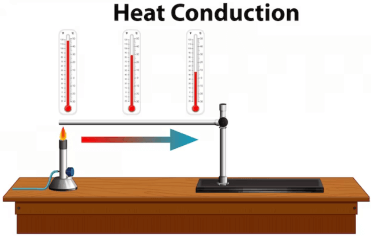Question
D = 0.256 * 10⁻⁴ m²/s
µ = 1.86 * 10⁻⁵ kg/m s
cₚ = 1.005 k J/kg degree Celsius
pᵣ = 0.701
p =1.165 kg/m³
a.
14.09 * 10⁸
b.
14.09 * 10⁷
c.
14.09 * 10⁶
d.
14.09 * 10⁵
Posted under Mass Transfer
Interact with the Community - Share Your Thoughts
Uncertain About the Answer? Seek Clarification Here.
Understand the Explanation? Include it Here.
Q. Air at 30 degree Celsius temperature flows at 45 m/s past a wet flat plate of length 0.5 m. Estimate the value of Reynolds number. Assume that the water vapor content of air...
Similar Questions
Explore Relevant Multiple Choice Questions (MCQs)
Q. Assume the following thermos-physical properties of air.
D =0.82 * 10⁻⁶ m²/s
v = 15.5 * 10⁻⁶ m²/s
Find the value of Schmidt number.
View solution
Q. Air at 1 atm and 25 degree Celsius temperature, flows inside a 3 cm diameter tube with a velocity of 5.25 m/s. Determine mass transfer coefficient for iodine transfer from the air stream to the weak surface. Assume the following thermos-physical properties of air.
D =0.82 * 10⁻⁶ m²/s
v = 15.5 * 10⁻⁶ m²/s
View solution
Q. Air at 1 atm and 25 degree Celsius temperature, flows inside a 3 cm diameter tube with a velocity of 5.25 m/s. Determine value of Sherwood number for iodine transfer from the air stream to the weak surface. Assume the following thermos-physical properties of air.
D =0.82 * 10⁻⁶ m²/s
v = 15.5 * 10⁻⁶ m²/s
View solution
Q. The empirical correlation for local mass transfer coefficient for laminar boundary layer flow past a flat plate is given by
View solution
Q. The empirical correlation for local mass transfer coefficient for turbulent boundary layer flow past a flat plate is given by
View solution
Q. The expression for average mass transfer coefficient is
View solution
Q. Sherwood number is a function of
View solution
Q. What is the melting point of chromium?
View solution
Q. What is the melting point of cobalt?
View solution
Q. Which one is having the highest melting point?
View solution
Q. What is the melting point of germanium?
View solution
Q. Which one is having a minimum melting point?
View solution
Q. What is the melting point of nichrome?
View solution
Q. What is the melting point of palladium?
View solution
Q. Which one is having a maximum melting point?
View solution
Q. What is the melting point of tin?
View solution
Q. Which one is having a minimum melting point?
View solution
Q. Given diagram shows diffusion of water vapor through air. Identify the correct statement.
View solution
Q. Figure shows equimolal diffusion between species B and C. Identify the correct molar diffusion rate
View solution
Recommended Subjects
Are you eager to expand your knowledge beyond Mass Transfer? We've handpicked a range of related categories that you might find intriguing.
Click on the categories below to discover a wealth of MCQs and enrich your understanding of various subjects. Happy exploring!








